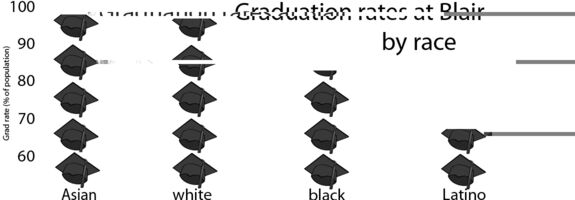Doing Latinos justice: equality through education
In the wake of Sotomayor's appointment, Latino students lag behind in school
Sonia Sotomayor is a high school valedictorian, a Princeton and Yale graduate, a veteran of 30 years in the courtroom and the "savior" of baseball who ended the 1994 Major League Baseball strike. And on Aug. 6, Sotomayor took on her most important role yet: the first Latina Supreme Court justice.
But while Sotomayor begins her life tenure on the Supreme Court, Latino students throughout the U.S. continue to lag behind their white and Asian classmates. As a result, Latinos are underrepresented in colleges, many high-paying professions and government positions. Equality for Latinos has a clear starting point: in schools.The achievement gap is ever-present, even in our own school. In 2009, only 65.8 percent of Blair's Latino students graduated, compared to 95.7 percent of whites, 81.3 percent of blacks and 96 percent of Asians/Pacific Islanders, according to the Maryland State Department of Education. Blair's Latino graduation rate has plummeted since 2002, when it was over 90 percent. The alarming drop demonstrates that the achievement gap between Latinos and other races persists, even in MCPS, one of the best school systems in the country.
In addition to a lower graduation rate, Latinos are less likely to attend college than their peers, according to 2002 data from the University of California, San Francisco. The factsheet also found that, compared to blacks and whites, Latino graduates are more likely to attend two-year colleges instead of four-year schools or attend college part-time.
Rosa Castillo of the Hispanic College Fund said that several factors lead to Latino underachievement in school. Many Latinos live in low-income areas, so their schools do not have adequate resources to help Spanish-speaking students overcome the language barrier, an essential part of the education process. Castillo also said that because few Latino parents attended college, their high school children do not have accessible help with the college application process.
The answer to improving Latino educational achievement is not straightforward due to the aforementioned social factors with which many Latinos cope. Despite the complexity of the problem, there are some simple changes that schools can make to more fully commit to helping Latino students. More resources for programs like English for Speakers of Other Languages (ESOL) would help Latino students to become more proficient English speakers. College counseling and mentor programs, like those provided at the Hispanic College Fund, could also encourage Latino students to pursue higher education and skilled careers.
The education achievement gap may be a multi-faceted problem with a difficult solution, but in order to attain equality, it is essential to close the gap. One dismal consequence of the gap is underrepresentation of Latinos in government. Latinos are the fastest growing segment of the U.S. (according to a 2007 Census Bureau estimate, Latinos make up 15.1 percent of the total U.S. population), yet there are only 27 Latino representatives in Congress and only one Latino senator. With improved education, more Latinos could be successful politicians, judges and bureaucrats.
Sotomayor's solid education enabled her to become a Supreme Court justice. The daughter of native Puerto Ricans, Sotomayor faced many difficulties while growing up in a housing project in the South Bronx. At the age of 8, she was diagnosed with Type 1 diabetes, and at 9, her father died.
Despite these disheartening obstacles, Sotomayor was motivated by her mother to excel in school. In her opening statement at the Senate confirmation hearings, Sotomayor said, "On her own, my mother raised my brother and me. She taught us that the key to success in America is a good education."
Sotomayor's hard work in school paid off. In 1992, former President George H.W. Bush appointed Sotomayor to the U.S. District Court for the Southern District of New York. Six years later, in 1998, former President Bill Clinton appointed Sotomayor to the U.S. Court of Appeals for the Second Circuit.
Castillo believes that Sotomayor's story is a testament to the importance of education and hard work. "It really reflects the American work ethic. If you work hard, study hard, you can change the destiny of your life," said Castillo.
But as it unfortunately stands, Sotomayor is an outlier. Similar to President Barack Obama, our country's first black President, she is an inspiration but an inaccurate representation of racial equality in America.
To achieve real equity, the U.S. needs more Sotomayors in every branch of government, and that means improving public school education for Latino students.
Tags: print
Natalie Rutsch. Page editor More »
Comments
No comments.
Please ensure that all comments are mature and responsible; they will go through moderation.
